
How to Use A4988 Stepper Motor Driver Carrier: Examples, Pinouts, and Specs
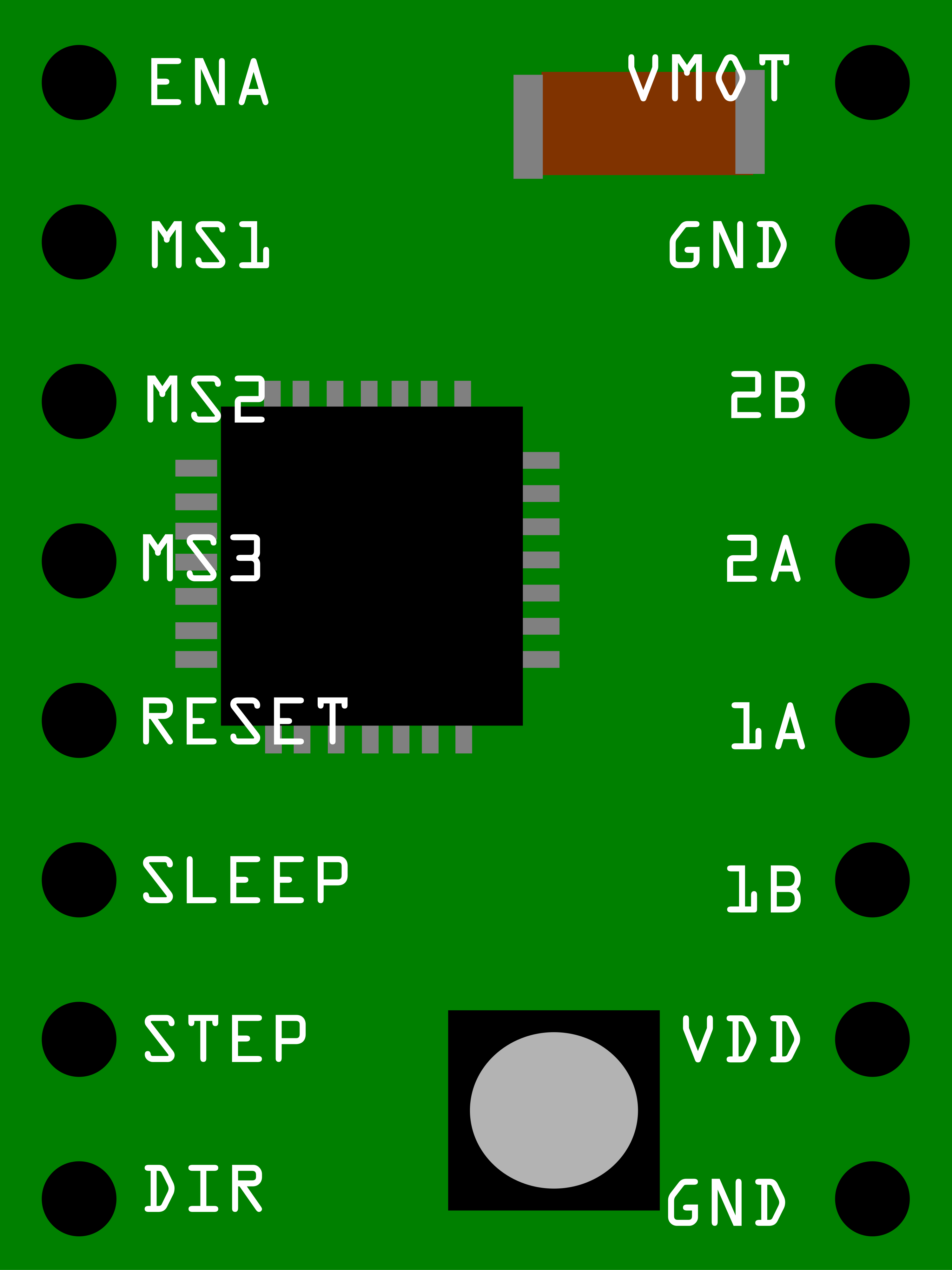
 Design with A4988 Stepper Motor Driver Carrier in Cirkit Designer
Design with A4988 Stepper Motor Driver Carrier in Cirkit DesignerIntroduction
The A4988 Stepper Motor Driver Carrier is a compact and versatile microstepping driver designed for controlling bipolar stepper motors. It enables precise control of motor position, speed, and torque, making it ideal for applications requiring high accuracy and smooth motion. The A4988 features adjustable current control, built-in over-temperature and short-circuit protection, and a straightforward interface for seamless integration into a wide range of projects.
Explore Projects Built with A4988 Stepper Motor Driver Carrier
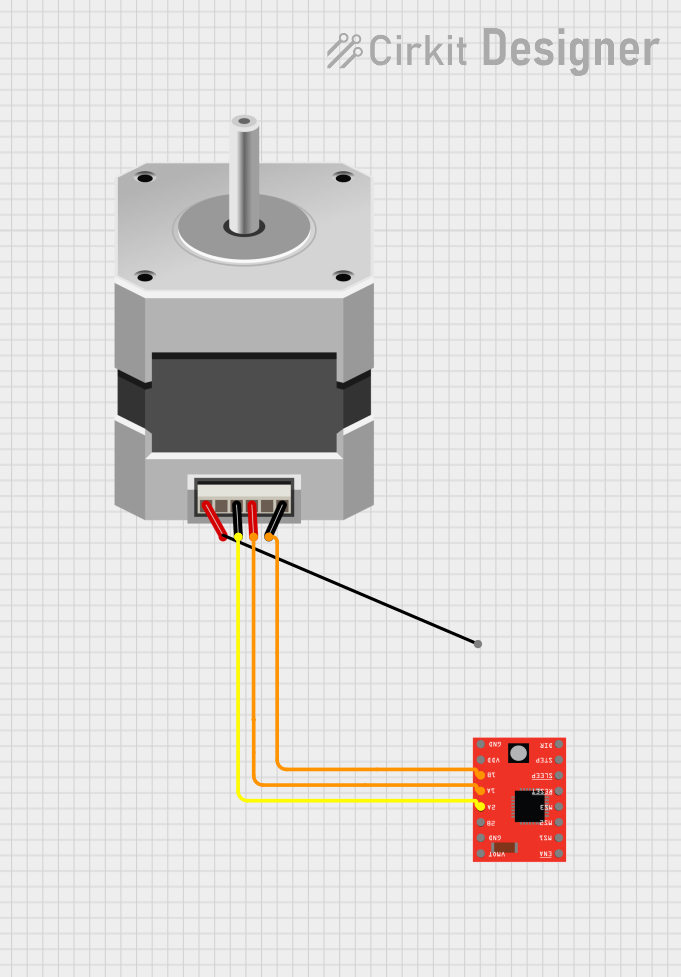
 Open Project in Cirkit Designer
Open Project in Cirkit Designer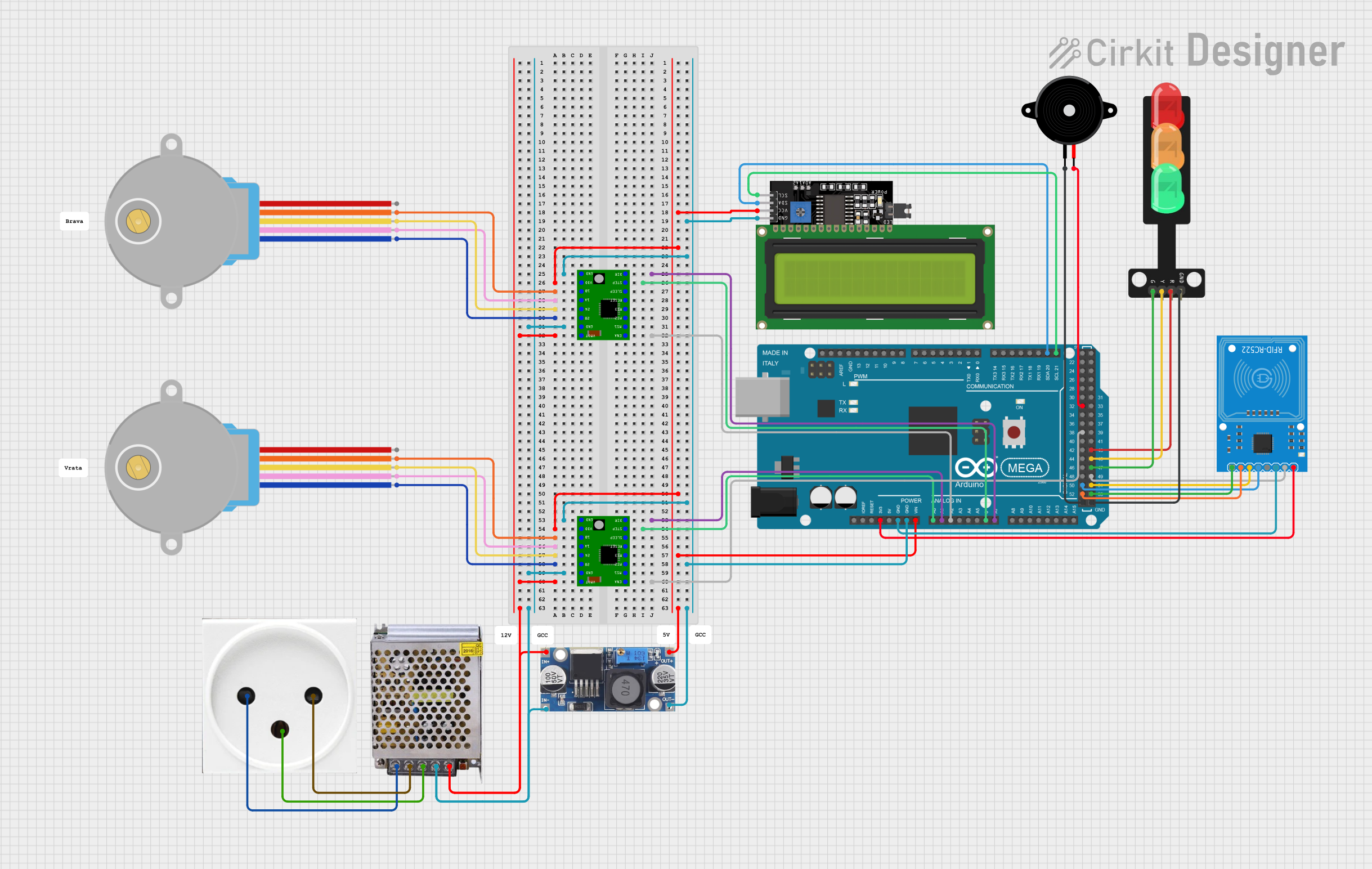
 Open Project in Cirkit Designer
Open Project in Cirkit Designer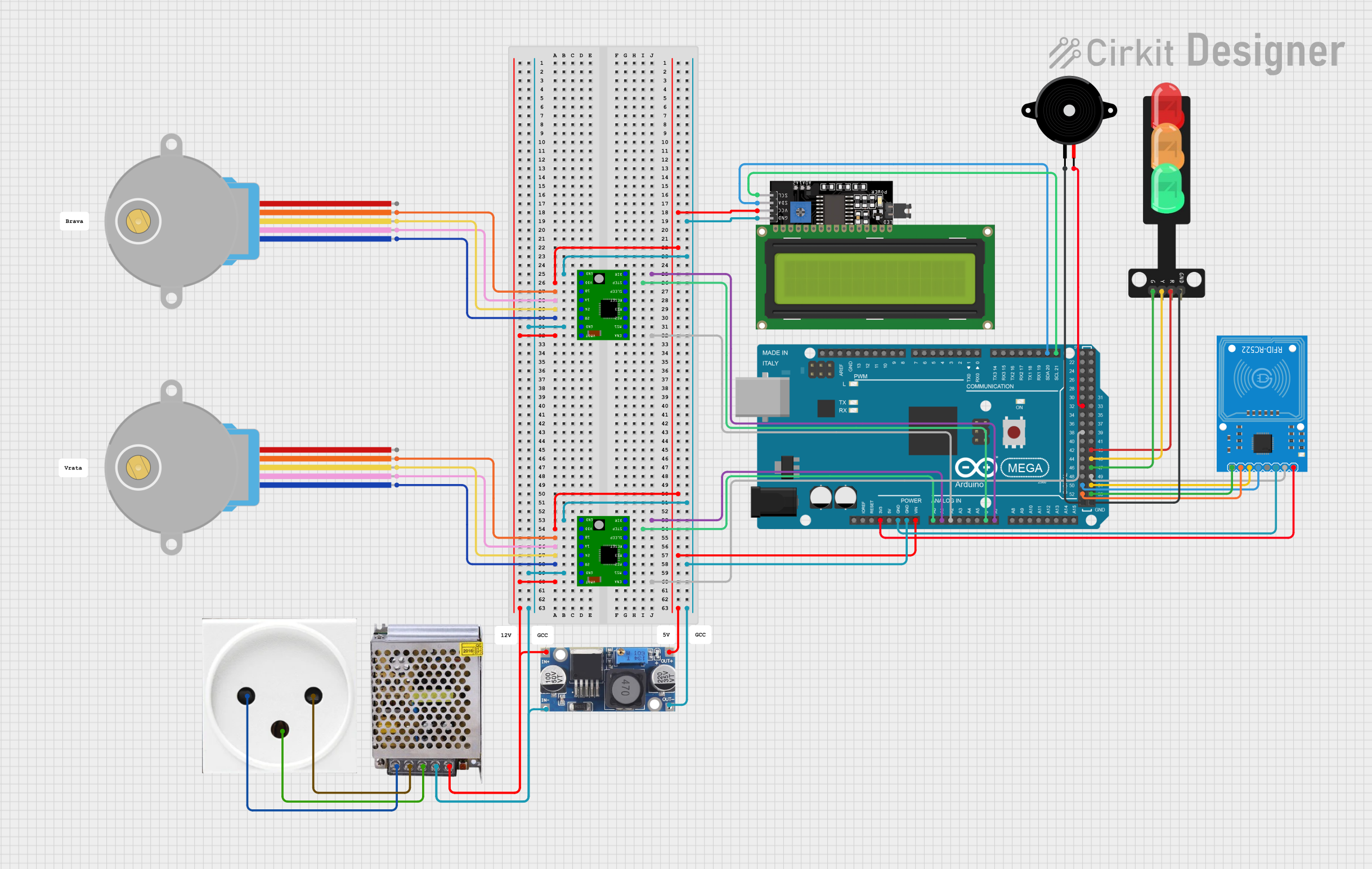
 Open Project in Cirkit Designer
Open Project in Cirkit Designer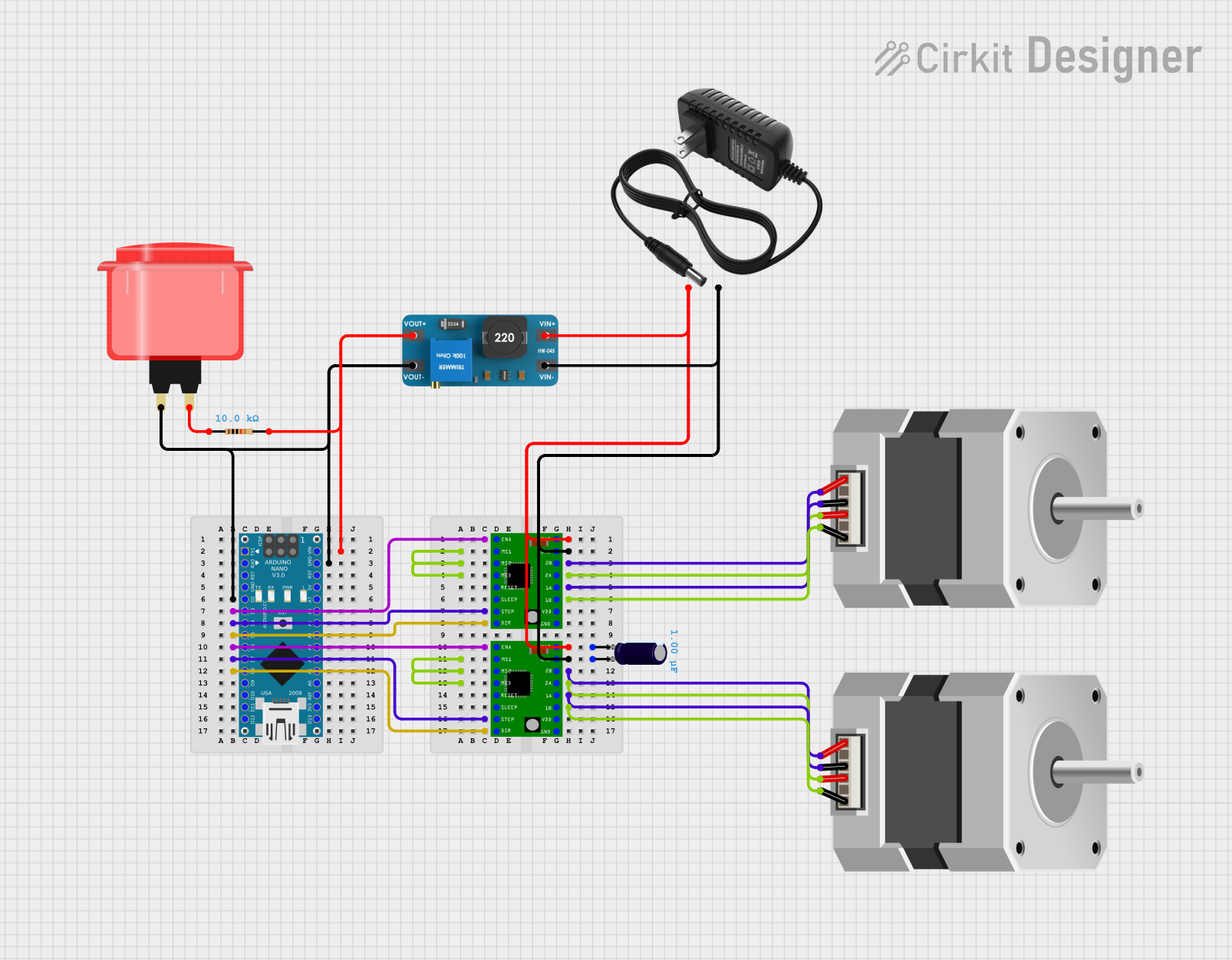
 Open Project in Cirkit Designer
Open Project in Cirkit DesignerExplore Projects Built with A4988 Stepper Motor Driver Carrier

 Open Project in Cirkit Designer
Open Project in Cirkit Designer
 Open Project in Cirkit Designer
Open Project in Cirkit Designer
 Open Project in Cirkit Designer
Open Project in Cirkit Designer
 Open Project in Cirkit Designer
Open Project in Cirkit DesignerCommon Applications and Use Cases
- 3D printers
- CNC machines
- Robotics and automation systems
- Camera sliders and gimbals
- Precision positioning systems
Technical Specifications
The A4988 Stepper Motor Driver Carrier has the following key technical specifications:
| Parameter | Value |
|---|---|
| Operating Voltage (VCC) | 8 V to 35 V |
| Logic Voltage (VDD) | 3.3 V or 5 V |
| Maximum Output Current | 2 A per coil (with sufficient cooling) |
| Microstepping Modes | Full, 1/2, 1/4, 1/8, 1/16 |
| Step Input Frequency | Up to 500 kHz |
| Current Control | Adjustable via potentiometer |
| Protection Features | Over-temperature, short-circuit, undervoltage lockout |
Pin Configuration and Descriptions
The A4988 has 16 pins, which are described in the table below:
| Pin Name | Type | Description |
|---|---|---|
| VMOT | Power Input | Motor power supply (8 V to 35 V). Connect a decoupling capacitor close to this pin. |
| GND | Power Ground | Ground connection for motor power supply. |
| VDD | Power Input | Logic power supply (3.3 V or 5 V). |
| GND | Power Ground | Ground connection for logic power supply. |
| 1A, 1B | Motor Output | Connect to one coil of the stepper motor. |
| 2A, 2B | Motor Output | Connect to the other coil of the stepper motor. |
| STEP | Input | Controls the step signal for the motor. Each pulse moves the motor one step. |
| DIR | Input | Sets the direction of motor rotation (high or low). |
| ENABLE | Input | Enables or disables the driver (active low). |
| MS1, MS2, MS3 | Input | Microstepping resolution selection pins. |
| RESET | Input | Resets the driver (active low). |
| SLEEP | Input | Puts the driver into low-power sleep mode (active low). |
| REF | Input | Reference voltage for current control. Adjusted via the onboard potentiometer. |
Usage Instructions
How to Use the A4988 in a Circuit
Power Connections:
- Connect VMOT to a power supply (8 V to 35 V) suitable for your stepper motor.
- Connect VDD to a 3.3 V or 5 V logic power supply.
- Ensure all GND pins are connected to a common ground.
Motor Connections:
- Connect the stepper motor coils to the 1A, 1B, 2A, and 2B pins. Refer to your motor's datasheet to identify the coil pairs.
Control Pins:
- Connect the STEP and DIR pins to your microcontroller or control circuit.
- Use the MS1, MS2, and MS3 pins to set the desired microstepping mode:
- Full step: MS1 = 0, MS2 = 0, MS3 = 0
- Half step: MS1 = 1, MS2 = 0, MS3 = 0
- Quarter step: MS1 = 0, MS2 = 1, MS3 = 0
- Eighth step: MS1 = 1, MS2 = 1, MS3 = 0
- Sixteenth step: MS1 = 1, MS2 = 1, MS3 = 1
Adjusting Current Limit:
- Use the onboard potentiometer to set the current limit. This prevents overheating and ensures safe operation of the motor and driver.
Decoupling Capacitors:
- Place a 100 µF electrolytic capacitor across VMOT and GND to reduce voltage spikes.
- Add a 0.1 µF ceramic capacitor across VDD and GND for logic power stability.
Example Arduino Code
Below is an example of how to control a stepper motor using the A4988 and an Arduino UNO:
// Define control pins
#define STEP_PIN 3 // Connect to STEP pin on A4988
#define DIR_PIN 4 // Connect to DIR pin on A4988
void setup() {
pinMode(STEP_PIN, OUTPUT); // Set STEP pin as output
pinMode(DIR_PIN, OUTPUT); // Set DIR pin as output
digitalWrite(DIR_PIN, HIGH); // Set initial direction (HIGH = clockwise)
}
void loop() {
// Generate step pulses
for (int i = 0; i < 200; i++) { // 200 steps for one revolution (1.8°/step motor)
digitalWrite(STEP_PIN, HIGH); // Step pulse HIGH
delayMicroseconds(1000); // Wait 1 ms
digitalWrite(STEP_PIN, LOW); // Step pulse LOW
delayMicroseconds(1000); // Wait 1 ms
}
delay(1000); // Wait 1 second before changing direction
// Change direction
digitalWrite(DIR_PIN, !digitalRead(DIR_PIN)); // Toggle direction
}
Important Considerations and Best Practices
- Cooling: If driving high currents, use a heat sink or active cooling to prevent overheating.
- Current Limit: Always set the current limit to match your motor's rated current to avoid damage.
- Power Sequencing: Power the logic (VDD) before the motor supply (VMOT) to prevent damage to the driver.
- Decoupling: Use appropriate capacitors to minimize noise and voltage spikes.
Troubleshooting and FAQs
Common Issues and Solutions
Motor Not Moving:
- Verify all connections, especially the motor coil pairs.
- Check the STEP and DIR signals from the microcontroller.
- Ensure the current limit is set correctly.
Driver Overheating:
- Reduce the current limit using the potentiometer.
- Add a heat sink or active cooling.
Motor Vibrating but Not Rotating:
- Check the microstepping mode settings (MS1, MS2, MS3).
- Ensure the motor coils are connected correctly.
No Output from Driver:
- Ensure the ENABLE pin is low (active low).
- Verify the power supply voltages (VMOT and VDD).
FAQs
Q: Can I use the A4988 with a unipolar stepper motor?
A: No, the A4988 is designed for bipolar stepper motors only.
Q: What happens if I exceed the current limit?
A: The driver will enter thermal shutdown to protect itself. Reduce the current limit or improve cooling.
Q: Can I control the A4988 without a microcontroller?
A: Yes, you can use a pulse generator or manual switches to control the STEP and DIR pins.